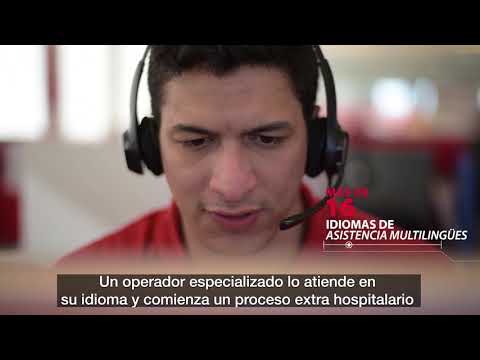What Does a Medical Assistant Do?
Contents
- Job duties of a medical assistant
- The training and education required to become a medical assistant
- The different types of medical assistant positions
- The work environment of a medical assistant
- The salary and job outlook for medical assistants
- The skills required to be a successful medical assistant
- The challenges faced by medical assistants
- The importance of teamwork for medical assistants
- The role of technology in a medical assistant’s job
- The future of the medical assistant profession
A medical assistant is a vital member of the healthcare team. Find out what they do and how they can help you.
Checkout this video:
Job duties of a medical assistant
The job duties of a medical assistant vary depending on the state in which they work and the size and type of facility in which they are employed. However, there are some general tasks that are commonly performed by Medical assistants These include, but are not limited to, taking and recording patient vital signs, such as blood pressure, weight, and temperature; assisting with medical procedures; preparing patients for examinations; teaching patients about self-care; and scheduling appointments. Medical Assistants may also perform administrative tasks, such as handling insurance forms and coding medical documents.
The training and education required to become a medical assistant
Medical assistants are trained and educated to perform various tasks in healthcare settings. These professionals work closely with licensed physicians and other healthcare personnel to provide patient care services. Most medical assistants have completed a postsecondary education program that typically lasts for one year. Some states may require medical assistants to be licensed or certified in order to practice.
Medical assistants typically perform both clinical and administrative tasks. Common clinical duties include taking patient vital signs, administering injections, performing routine laboratory tests, and updating patient medical records Administrative duties may include scheduling appointments, handling telephone calls, verifying insurance benefits, and coding medical documents. Licensed medical assistants may also have additional responsibilities, such as dispensing medications and providing patient education.
The different types of medical assistant positions
The different types of medical assistant positions include:
-Clinical medical assistants
-Administrative medical assistants
-Insurance processors
-Billing and coding specialists
-Phlebotomists
-EKG technicians
-X-ray technicians
The work environment of a medical assistant
Medical assistants work in a variety of medical settings, including doctor’s offices, clinics, hospitals, and even pharmaceutical companies. Some medical assistants work in more than one setting during their career. The majority of medical assistants work full time, and some work evenings or weekends.
The salary and job outlook for medical assistants
Medical assistants are in high demand. They perform administrative and clinical tasks in hospitals, clinics, physicians’ offices, and other healthcare facilities.
The salary for medical assistants varies depending on experience, location, and type of employer. The median annual salary for medical assistants was $33,610 in May 2019, according to the U.S. Bureau of Labor Statistics (BLS). The top 10% of earners made more than $47,600, while the bottom 10% earned less than $24,280.
The job outlook for medical assistants isbright. The BLS projects that employment of medical assistants will grow 19% from 2019 to 2029—much faster than the average for all occupations. The growing demand for healthcare services will lead to an increased need for medical assistants.
The skills required to be a successful medical assistant
Medical assistants are among the most important members of a healthcare team. They are responsible for providing vital support to doctors and nurses, and performing a variety of administrative and clinical tasks.
To be successful in this role, medical assistants must have excellent communication, organizational, and people skills. They must be able to work well under pressure, and be comfortable using a variety of technology. In addition, medical assistants must have a strong understanding of Medical Terminology and procedures.
The challenges faced by medical assistants
Working as a medical assistant can be a very rewarding career, but it does come with its challenges. Perhaps the biggest challenge is the amount of responsibility that medical assistants have. They are often responsible for a wide range of tasks, from keeping track of patients’ records to scheduling appointments and helping to prepare for surgeries.
Another challenge faced by medical assistants is the fact that they often work long hours. While some medical assistants may only work regular business hours, others may find themselves working nights, weekends, and holidays. This can be tough on both the medical assistant and their family.
Lastly, medical assistants need to be able to handle stress. Working in the medical field can be very stressful, as there are often life-and-death situations. Medical assistants need to be able to remain calm under pressure and handle whatever comes their way.
The importance of teamwork for medical assistants
No matter what field you work in, it is always important to be a team player. But this is especially true for medical assistants, who play a vital role in the healthcare team. From greeting patients and collecting their medical histories to scheduling appointments and preparing treatment rooms, medical assistants perform many important tasks. They also provide emotional support to patients and their families.
teamwork is essential for medical assistants because they often work with other healthcare professionals, such as doctors, nurses, and pharmacists. In order to provide the best possible care for patients, it is important that everyone on the healthcare team works together seamlessly. Medical assistants who are able to effectively communicate with other members of the team and take direction well are an asset to any healthcare facility.
If you are considering a career as a medical assistant, it is important to remember that teamwork will be a big part of your job. If you are not a team player, this may not be the right career for you.
The role of technology in a medical assistant’s job
In recent years, there has been an increase in the use of technology in the medical field. Medical assistants are no exception. The role of technology in a medical assistant’s job is to help doctors and other healthcare providers efficiently and effectively provide care to patients.
Medical assistants use a variety of technological tools to perform their duties. These tools include electronic health records (EHRs), scheduling and billing software, and patient portals. EHRs are used to store and track patient medical information. Scheduling and billing software helps medical assistants keep track of appointments and payments. Patient portals give patients 24/7 access to their health information.
The use of technology in the medical field is constantly evolving. As new technologies become available, medical assistants will need to keep up with the latest changes in order to do their job effectively.
The future of the medical assistant profession
The medical assistant profession offers many opportunities for career growth. With the aging of the Baby Boomer generation and the increased need for health care services, the demand for medical assistants is expected to grow much faster than average in the coming years.
As the population ages, more people will need medical care, and there will be an increased demand for preventative care and health maintenance services. This means that medical assistants will be needed to provide routine care, take patient histories, assist with examinations, and perform basic laboratory tests. In addition, as more physicians enter private practice and group practices, they will need medical assistants to handle administrative tasks such as scheduling appointments and handling insurance paperwork.
The duties of medical assistants vary from office to office, but most perform a combination of administrative and clinical tasks. Administrative duties may include answering phones, scheduling appointments, filing insurance forms, and preparing patient charts. Clinical duties may include taking medical histories, measuring vital signs, preparing patients for examinations, assisting with procedures such as lab tests and X-rays, and giving injections. Many medical assistants also perform basic laboratory tests or dispense medication under the supervision of a physician or pharmacist.







